I mestieri del Cinema. Michele Picciaredda: l’occhio dei registi
Dietro le macchine da presa dei film di De Sica, Allen e Antonioni c’era un cameraman sardo. Suo il piano sequenza che ha fatto storia – INTERVISTA VIDEO. di E.A. Translation by Rita Bainton
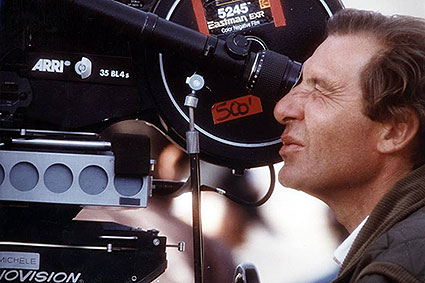 Si è svolta a Serdiana, ospitata dalle cantine Argiolas, una tappa delle Giornate Europee del Cinema, organizzate a Cagliari dalla Sardegna Film Commission. È lì che abbiamo incontrato Michele Picciaredda, cameraman e direttore della fotografia, uno dei pochi sardi che può vantare anni di esperienza nel campo del cinema: 117 film all’attivo, ma anche documentari spot e fiction.
Si è svolta a Serdiana, ospitata dalle cantine Argiolas, una tappa delle Giornate Europee del Cinema, organizzate a Cagliari dalla Sardegna Film Commission. È lì che abbiamo incontrato Michele Picciaredda, cameraman e direttore della fotografia, uno dei pochi sardi che può vantare anni di esperienza nel campo del cinema: 117 film all’attivo, ma anche documentari spot e fiction.
Come inizia la sua carriera?
Già in Sardegna avevo avuto l’opportunità di avvicinarmi al mondo del cinema attraverso il set del film “Una questione d’onore” di Luigi Zampa, Carlo Di Palma era il direttore della fotografia. Io già da tempo coltivavo una passione per la fotografia e sono andato a presentarmi a Di Palma dicendo che volevo fare il cameraman. Lui mi disse di andare a Roma e frequentare il Centro Sperimentale e dopo di contattarlo. Mi sono trasferito a Roma e ho partecipato al bando per accedere al Centro Sperimentale, eravamo 100 sono arrivato primo! Una volta finito il corso ho subito lavorato per un film girato in India, e da lì ho iniziato a lavorare.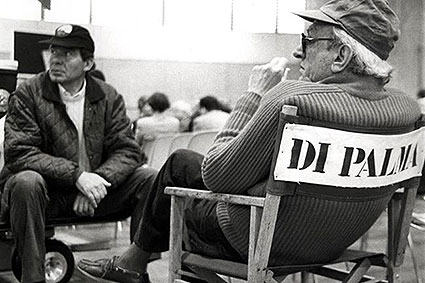 Quindi a quei tempi, una volta frequentato il Centro Sperimentale di Cinematografia, era facile trovare lavoro?
Quindi a quei tempi, una volta frequentato il Centro Sperimentale di Cinematografia, era facile trovare lavoro?
Sì e no, nel senso che c’erano film di serie A e film di serie B. Era facile trovare lavoro nei film di serie B mentre io volevo fare film di serie A. Volevo iniziare bene e tra fortuna, volontà e capacità piano piano sono arrivato a lavorare con De Sica e Antonioni.
Come è arrivato in America?
Un giorno Antonioni mi ha detto che Carlo Di Palma cercava un operatore di macchina. Ci ha messo in contatto e Di Palma ha voluto conoscermi e dopo abbiamo lavorato insieme per 25 anni. Quando Carlo è stato chiamato da Woody Allen ha subito detto che avrebbe portato il suo operatore. Purtroppo per un problema burocratico non ho potuto partecipare a quel film, ma in seguito ho avuto la fortuna di lavorare con Allen. Ho lavorato alle parti dei suoi film girate in Italia, come per esempio “Tutti dicono I love you” e “La dea dell’amore”, che è stato girato a Taormina.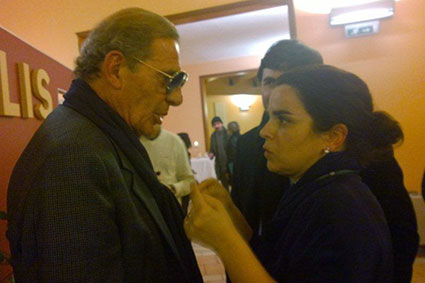 Com’è Woody Allen?
Com’è Woody Allen?
Essenzialmente una persona timida. Sul set instaura sempre un rapporto profondo con il direttore della fotografia, con gli altri è formale e professionale. A differenza di altri registi che parlano molto con la troupe, lui ti dice sono quello che devi fare. Non è nevrotico come si pensa, anzi, è tranquillo e parla con un tono di voce molto basso.
Che ricordo ha di De Sica?
Abbiamo lavorato insieme in due film: “Il giardino del Finzi-Contini” con cui abbiamo vinto l’Oscar e “Lo chiameremo Andrea”. Una persona di gran classe, con una qualità incredibile di riuscire a far recitare chiunque, anche i sassi! Quando spiegava ad un attore cosa voleva da un personaggio, se percepiva difficoltà lo faceva sedere sulla sua poltrona e recitava per lui. Aveva un talento enorme.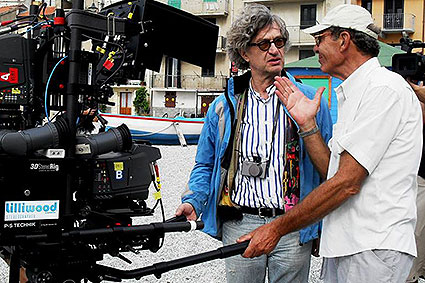 Ha lavorato anche con Antonioni e ha partecipato a Professione Reporter con Jack Nicholson e Maria Schneider.
Ha lavorato anche con Antonioni e ha partecipato a Professione Reporter con Jack Nicholson e Maria Schneider.
Due persone stupende, Jack Nicholson è molto divertente, è un pazzo scatenato! Ricordo quando vivevamo nel deserto la mattina si svegliava alle 5 e accendeva una radio a tutto volume, noi dormivamo in tenda e ci svegliava tutti. Una volta gli si era inceppata la sua macchina fotografica e io l’avevo aiutato. Da quel giorno sono entrato nelle sue grazie e mi voleva sempre con lui. Mi ha regalato un orologio che era stato utilizzato nel set. Purtroppo l’ho perso e mi dispiace molto.
In Professione Reporter c’è uno dei piani sequenza più famosi della storia del cinema, ci racconti come è nata e si è sviluppata l’idea?
Antonioni l’aveva in testa dall’inizio, dalle fasi di scrittura, ma non aveva chiaro come realizzarla. Ha scoperto che in Canada esisteva una palla con dentro una macchina da presa e intorno dei giroscopi. Era sospesa da una gru che veniva guidata dall’operatore. Io la guidavo da un camion e mi avevano istruito su come fare. Abbiamo dovuto togliere l’involucro per far passare la palla attraverso la finestra, ma si è alzato il vento e abbiamo dovuto aspettare sei giorni. Era l’ultima scena da girare e il settimo giorno dopo 8 prove buone abbiamo finito il film. 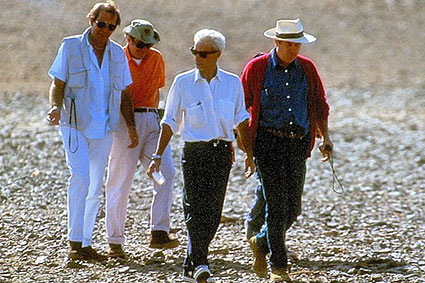 Ha anche lavorato come direttore della fotografia?
Ha anche lavorato come direttore della fotografia?
Si ho iniziato in Francia, poi ho fatto una serie di medi metraggi, però alla fine mi chiamavano spesso a fare l’operatore. Continuo a lavorare, per esempio ora sto facendo una serie di lavori per la Onlus Bambini Cardiopatici del Mondo, che fa parte di Medici senza frontiere: sono un gruppo di medici che nelle loro vacanze dal lavoro vanno a operare bambini del terzo mondo con problemi cardiologici.
Il cinema sardo sta muovendo molti passi avanti, ti piacerebbe collaborare a produzioni sarde, considerato anche che nell’isola abbiamo pochi direttori della fotografia?
Mi piacerebbe molto e sono a disposizione. Ci sono dei giovani talentuosi che hanno fatto dei buoni lavori. Non faccio nomi perché qualcuno potrebbe offendersi. Io seguo il cinema sardo e ho visto prodotti di qualità. Spero un giorno di fare un bel film con un regista sardo.
L'INTERVISTA
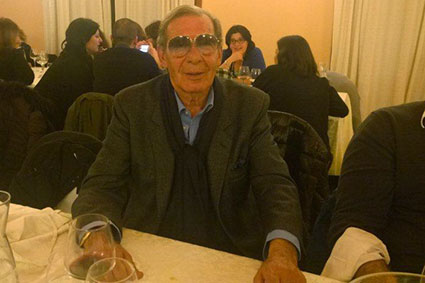 One of the Days of European Cinema, organized in Cagliari by the Sardinia Film Commission, was held in the cellars Serdiana Argiolas where we met Michele Picciaredda, cameraman and director of photography, and one of the few Sardinian who has years of experience in the field of cinema. 117 films under his belt, including documentaries and fiction.
One of the Days of European Cinema, organized in Cagliari by the Sardinia Film Commission, was held in the cellars Serdiana Argiolas where we met Michele Picciaredda, cameraman and director of photography, and one of the few Sardinian who has years of experience in the field of cinema. 117 films under his belt, including documentaries and fiction.
How did you start your career?
Back in the days, in Sardinia I was introduced to the world of cinema on the set of the film "A Matter of Honor" by Luigi Zampa, Carlo Di Palma was the cinematographer. I have long cultivated a passion for photography and I introduced myself to Di Palma saying I wanted to be a cameraman. He told me to go to Rome and attend the Experimental Cinema Center and after that to call him. I moved to Rome and I applied for admission to the Experimental Center, out of 100 I was picked first! Once completed the course I immediately was hired for a movie that was shooting in India, and from there I started working.
Back then, once you attended the Experimental Cinema Centre, was it easy to find work?
Yes and no, at that time the movies were divided into A and B list: it was easy to find work in B movies but I wanted to make A list films. I wanted to start well and with luck, perseverance and pure will, I began slowly and ended up working with De Sica and Antonioni.
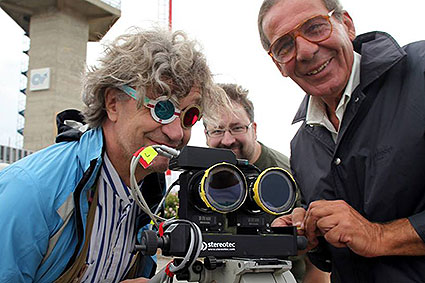 How did you end up in America?
How did you end up in America?
One day Antonioni told me that Carlo Di Palma was looking for a cameraman. He put me in contact with Di Palma, he wanted to meet me and after that we worked together for 25 years.
When Carlo Di Palma was contacted by Woody Allen he told him that he would bring his cameraman. Unfortunately because of a bureaucratic problem I could not take part in the movie, but later I had the good fortune to work with Allen. I was involved with his films that he shot in Italy, such as "Everyone Says I Love You" and "LA Goddess of Love" which was filmed in Taormina.
What is like to work with Woody Allen?
Basically he is a shy person. On the set he always establishes a deep relationship with the director of photography, with others is formal and professional. Unlike other directors who talk a lot with the crew, he only tells you what he needs you to do. He is not neurotic as people say, not at all, he is quiet and speaks with a very soft voice.
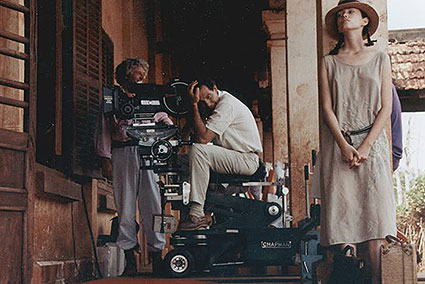 What do you remember about De Sica?
What do you remember about De Sica?
We worked together in two films: "The Garden of the Finzi-Contini" which won an Oscar, and "We'll Call Him Andrew." A first class gentleman, with an incredible trait of being able to persuade anyone to act, even a rock! When he explained to an actor what he wanted from him, if there was a problem, he would have the actor sit in his chair and acted the scene for him. He had a huge talent.
You also have worked with Antonioni and have participated in Professional Reporter with Jack Nicholson and Maria Schneider.
Two wonderful people, Jack Nicholson is great fun, he's crazy and wild! I remember when we lived in the desert in the morning he would wake up at 5 am and every day would turn on a radio, blaring, we slept in a tent and we would all wake up. Once he jammed a camera and I helped him fix it. Since that day I was his best buddy, and he always wanted me around. He gave me a watch that was used on the set. Unfortunately I lost it and I'm very sorry for that.
In Professional Reporter there is one of the most famous sequence shots in cinema history, tell us: how the idea was born and developed?
Antonioni had a vision in his mind from the beginning, in the script, but was not sure how to achieve it. He found out that in Canada there was a ball containing a camera with a round circuit. He was suspended from a crane that was being driven by an operator. I was operating a truck and I was instructed to drive it. We had to remove the covering to pass the ball through the window, but because the wind was too strong, we had to wait six days. It was the last scene, and the seventh day after 8 good tests, we finished the film.
You've also worked as a cinematographer?
It started in France, when I did a series of medium-length, and toward the end of the shooting they asked me to be the cinematographer. I work all the time, for example, now I'm doing a series for the charity Children‘s Hearth World, which is sponsored by Doctors Without Borders. They are a group of doctors that in their free time help Third World children with cardiology problems.
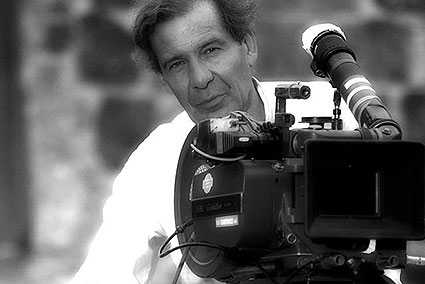 The Sardinian cinema is making a lot of progress: would you like to work in a production in Sardinia, considering that in the island we have few cinematographers?
The Sardinian cinema is making a lot of progress: would you like to work in a production in Sardinia, considering that in the island we have few cinematographers?
I would love that and I am available. We have talented young people who have done great work. I mention no names because someone might take offense. I follow the Sardinian cinema and see some great results. I hope one day to make a good movie with a Sardinian director.
18 marzo 2015
